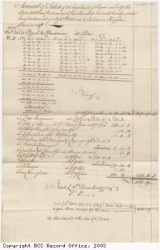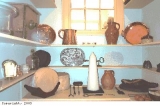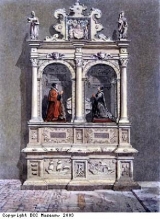Plantation sugar
Sugar and tobacco were the biggest imports to Bristol from the Caribbean plantations. Both needed to be processed before they could be sold on. Some processing happened on the plantation, but the remaining processing took place in Bristol. Thus major industries developed in Bristol to process sugar and tobacco. Sugar was made into fine white loaves or cones (the shape in which it was crystallised and sold). Tobacco was processed into either twist (a ‘rope’ made by twisting the tobacco leaves together tightly) or snuff (powdered tobacco which was sniffed rather than smoked).
This bill is for sugar shipped from the Spring Plantation on the Caribbean island of Jamaica to Bristol. The Spring Plantation was owned by the Smyth family, of Ashton Court in Bristol. Fifteen hogsheads (which were barrels holding about 272 kilos), of sugar worth £409 (over £20,000 today), were shipped to Bristol in 1752. The sugar would have been partly processed on the plantation and was a brown colour – this type of sugar is called ‘muscovado’. The sugar was shipped to Bristol where further processing would produce pure white sugar. The muscovado sugar was first boiled with water and refined to remove the impurities. This hot sugar syrup was then poured into moulds and left to drain and crystallise. The moulds were cone-shaped, and the pure white sugar that came out was known as a loaf, pictured here.
Sugar was first imported in the 15th century into Britain as refined (that is, fully processed) sugar from Portuguese plantations on the islands of Madeira in the Atlantic Ocean. In the early 17th century raw sugar was imported into Bristol and processed in the city’s first sugar house. This was owned by Robert Aldworth, the richest merchant in Bristol in his day. He was buying the sugar from Portuguese and Spanish plantations on the islands of the Madeiras, Canaries and Azores in the Atlantic Ocean. Robert Aldworth’s sugar business was so important that he had sugar loaves carved on his tomb, which is pictured here. The amounts of sugar imported into Bristol varied each year. In 1623, for example, merchants imported 539 hogsheads of sugar into Bristol. The following year they imported only 3, but the year after that 450. Weather could affect the harvest and the amount of sugar produced on the plantations. War might also limit overseas trade.
By about the middle of the 17th century, sugar was coming from British plantations on the Caribbean islands of St Kitts, Barbados and Jamaica. The amounts imported into Bristol rose dramatically. The Port Books and the Wharfage Accounts books were documents used in the management of the port of Bristol. They listed what goods were imported by whom and in what amounts. The books show that Bristol merchants imported over 3,000 hogsheads of sugar in 1654. By 1695, there were 10 sugar houses in the city processing the sugar imports.
The sugar trade grew further in the 18th century. One of the largest annual imports was in 1785 and was over 22,000 hogshead. Half of these 18th century imports were from the island of Jamaica.
When first imported in small amounts, sugar was an expensive luxury. As the growing number of sugar plantations increased the supply of sugar, the price tended to come down. By the 19th century, sugar, which had once been only for the rich, was cheap enough to be an important source of energy in the diet of the poor.





